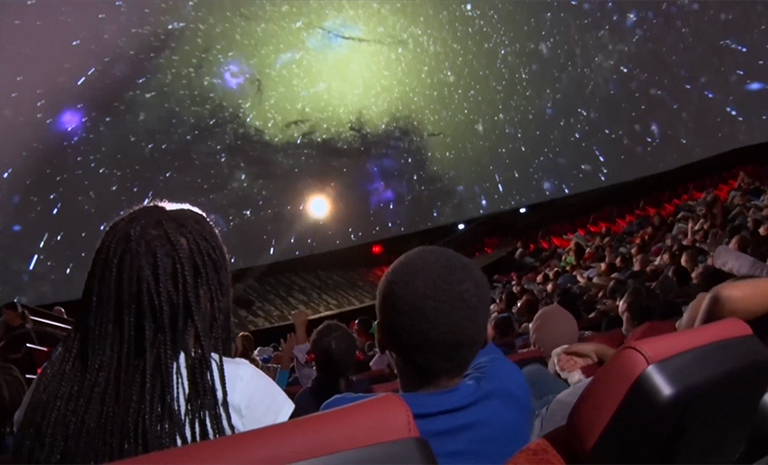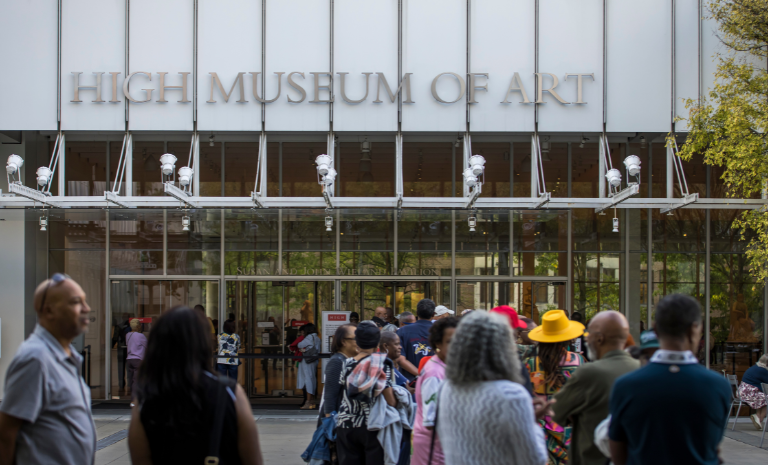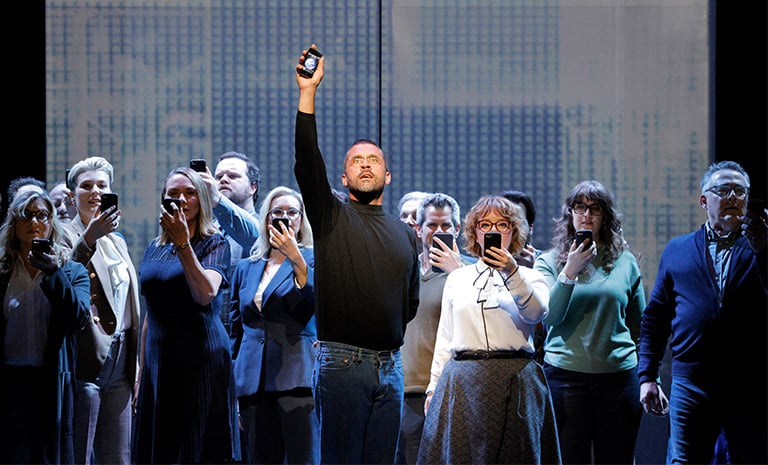Arts and Culture
BI and Analytics
Business Strategy
Article
Success Stories
976110bc-6199-4f41-b321-9b56d4bc17b1
5 min
https://edge.sitecorecloud.io/tessituraneab9a-tessiturane5642-staging-5396/media/Images/Licensee-Photography/Photos_768x465/lsc-hoberman_768x465.jpg?h=465&iar=0&w=768
How Liberty Science Center got strategic about data
Beyond the surface
3/27/2024
5 min
“Something’s gotta give.”

Tamour Kousha
It was 2022, and Tamour Kousha knew Liberty Science Center was standing at a crossroads. The New Jersey organization had many reasons to celebrate. Closed for seven months during the height of the pandemic, the center emerged into a period of sustained growth. Attendance and membership volumes rivaled similar numbers from before 2020.
The center also was making intentional progress toward diversifying guest demographics. Its planetarium naturally attracts visitors of all ages. “There are kids that go into a morning show where they watch Sesame Street on the largest dome in America,” Tamour said. “Seniors come in the afternoon because it’s a sit-down experience.”
In recent years, the organization introduced several programs to broaden the base further. LSC After Dark is a 21-and-over event that entices young adults. Wobbly World caters to the center’s youngest learners. And Big Art at LSC offers interactive installations that attract brand-new audiences.
“That’s just sort of a mindset of the organization,” Tamour said. “We’re not afraid to try new things. Not everything’s going to be a home run. We celebrate our successes, and we learn from our failures.”
“That’s just sort of a mindset of the organization. We’re not afraid to try new things.”
But with expansion came challenges. As the center’s Executive Vice President and Chief Financial Officer, Tamour recognized the need to better understand these new customers and to nurture relationships with them. He knew Liberty Science Center needed to derive more value from its visitor data.
“As I saw us continually growing, I thought to myself, ‘We’re not pulling data the way we should,’” he said. “We were decent at capturing data, but we weren’t using that data in a strategic way. It’s great to get a dashboard or a report and look at it. But that’s not what data’s about.”
Tamour envisioned a complete overhaul of Liberty Science Center’s data strategy. With some internal reshuffling and the expertise of a senior technology professional from Bank of America’s Leader on Loan program, Tamour built a new team. They focused on one goal: Create a more data-driven institution.

Visitors react to images of the solar system in the largest planetarium in America at Liberty Science Center.
Liberty Science Center launched its data project in March 2023. The team’s work began with brainstorming to define the project’s focus areas. They conducted a structured inventory of the applications the center used to collect and store data, interviewing key stakeholders and department heads. They bucketed their technology learnings into three categories: core platforms integrated across the organization, department-specific programs and ancillary applications they hoped to retire.
Then they started chipping away at each data project they’d identified, focusing first on those with the largest revenue impact. Attendance data was a priority. “That’s an area where we had different reports that were all over the place,” Tamour said. “There was no real structure there.”
Tessitura powers Liberty Science Center’s main box office ticketing system and captures most of the organization’s earned and contributed revenue. But the center had not taken full advantage of its reporting capabilities.
“It’s great to get a dashboard or a report and look at it. But that’s not what data’s about.”
“I would say we were using Tessitura Analytics, but not the way it’s intended to be used, as a true business intelligence tool,” Tamour said. “We found that the way we were capturing reporting data was all over the place. For example, there’d be Google sheets. People would pull information out of Tessitura and plug in other information. And on the finance side, we were trying to reconcile what’s going into the accounting system to these separate sheets. We knew we had to be consistent and stop that across the institution.
“Our team used Tessitura Analytics to build a clean, consistent dashboard that anybody can look at,” he continued. “It shows when we’re open, what our attendance was. You get a dashboard up top that shows attendance and revenue numbers. As you scroll down, things get more granular, with conversion rates for our planetarium and our 3-D theatre, conversion rates for any premium exhibits where we include an upcharge.”
The data team aims to provide every department at the center with the insights needed to achieve their goals. Making the data actionable helps the center fulfill the promise of its mission.
“We have a useful tool in Tessitura Analytics. Tessitura is the central place where most of our revenues are being captured. So why not use that in a more meaningful way?” Tamour said. “The projects that are on the table for the data team right now, that’s what they are focused on — capturing all that data and isolating it in ways we can use.”
That also means a deeper investigation to identify new data opportunities. “Tessitura’s a critical application for us. We would not be able to run our business without Tessitura,” Tamour said. “And I would say we’re only scratching the surface of what Tessitura’s capabilities are. I’m so glad we have this team diving into this.
“I’m really happy with the progress,” he continued. “We have these tools. People are starting to use them. And it aligns with the intent behind this team: to have the data, reporting, dashboards and KPIs that the organization is using to make decisions on how we run our business. I can see that’s the direction we’re going in, and I’m excited about that.”
Top photo of the Hoberman Sphere courtesy of Liberty Science Center.
Topics
Arts & Culture
/BI & Analytics
/Business Strategy

A museum's million-dollar membership initiative
Fundraising / Arts & Culture / Museums / Memberships
How the High Museum’s front-of-house team eclipsed its fundraising goals by 60%

Ballet Austin boosts efficiency and engagement with Tessitura v16
BI & Analytics / Customer Service / Marketing
Forecasting, reporting and segmentation transform data into impact

Can AI help find new customers and donors?
Technology / Audience Development / Digital / Arts & Culture
San Francisco Opera and California Academy of Sciences offer two success stories